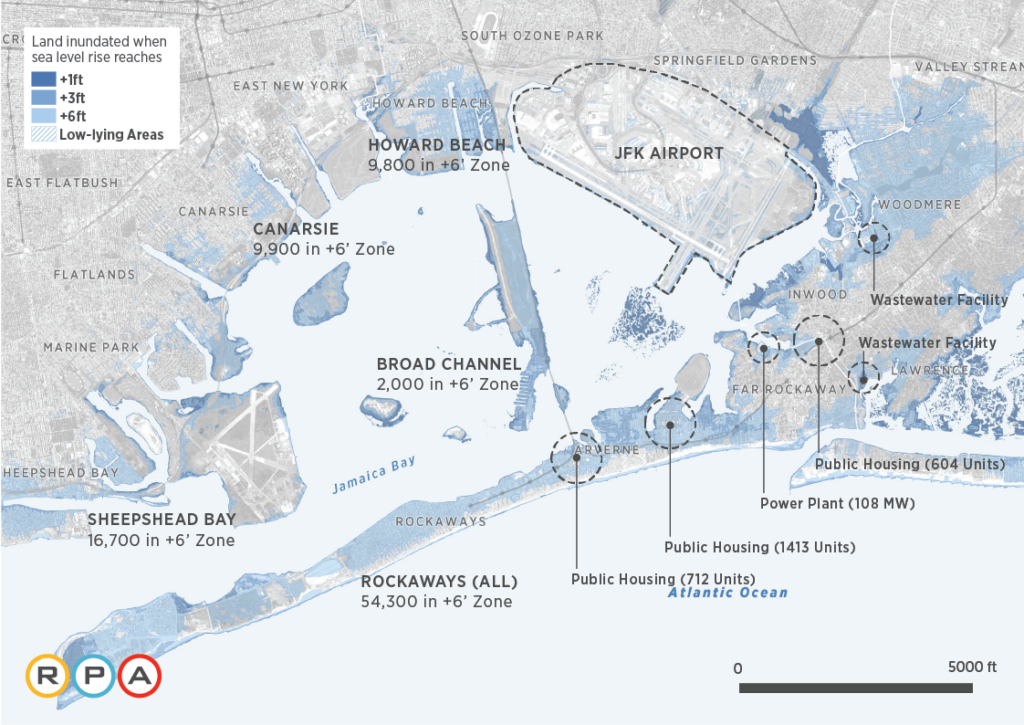The recent decision by the Trump Administration to revoke an Obama-era executive order establishing a federal flood risk management standard for federally-funded buildings and infrastructure represents an alarming step backwards at a time when the effects of climate change are becoming more severe.
The 2015 Obama executive order had required new federally subsidized building projects in floodplains - like hospitals and public housing - and infrastructure - like roads, bridges, airports and power facilities - to factor the latest climate science including sea level rise into their design and set standards to build 2 or 3 feet above the 100-year flood elevation.
As described in RPA’s report, Under Water, sea levels in our region have already risen about one foot in the past century, and the rate is now accelerating, representing a significant threat to our communities and infrastructure. An additional one foot, possible as soon as 2030, would permanently flood the places where around 19,000 residents live today. Three feet, a possibility as soon as 2050, would permanently flood places where 114,000 residents live today. And six feet, a possibility by early next century, would permanently flood the places where more than 600,000 residents live today.

The Trump Administration signed the executive order revoking the Obama order in an effort to streamline approval processes for development. RPA supports efficiencies around approval processes, and has demonstrated that this can be done without weakening environmental protections.
Using federal funds to construct buildings and infrastructure in flood plains to standards that don’t account for the increased flooding and sea level rise already being measured is nothing short of absurd. In the name of expediency, this action increases risk, will cost taxpayers more money in the future and is bad for communities.
